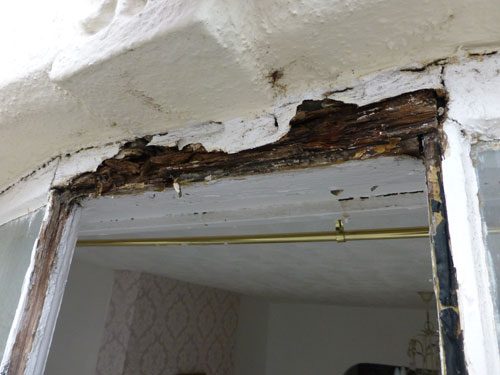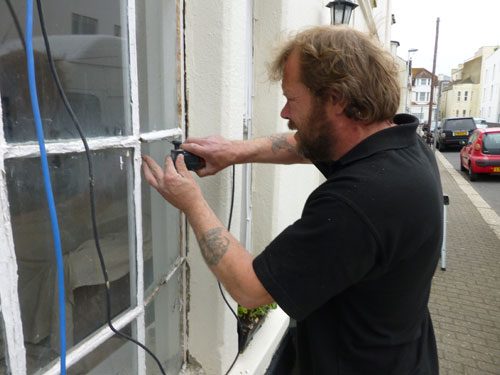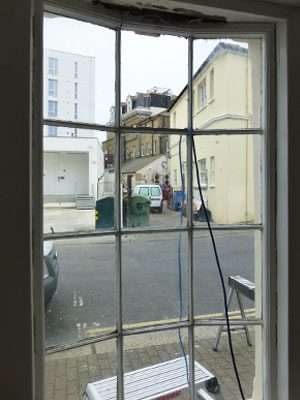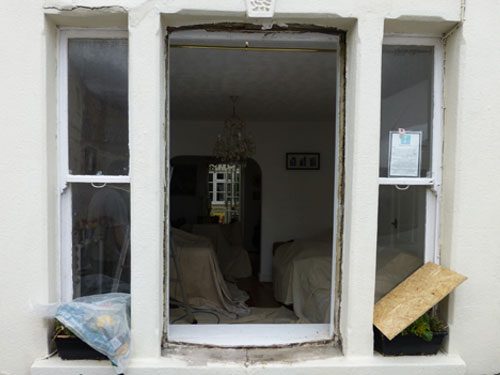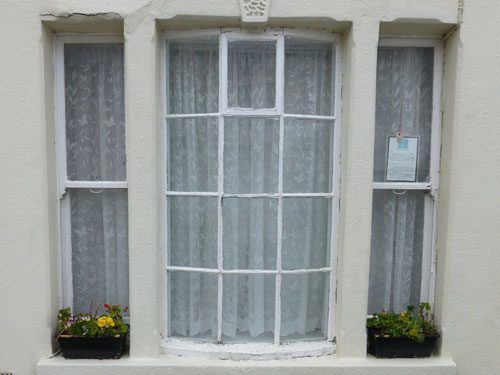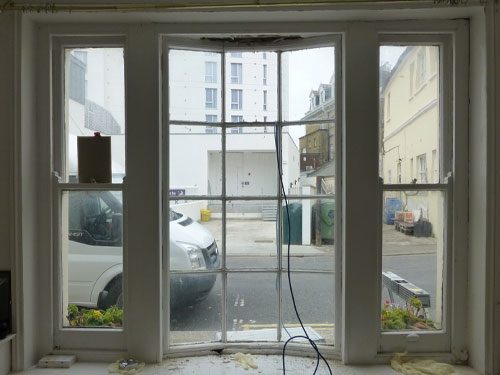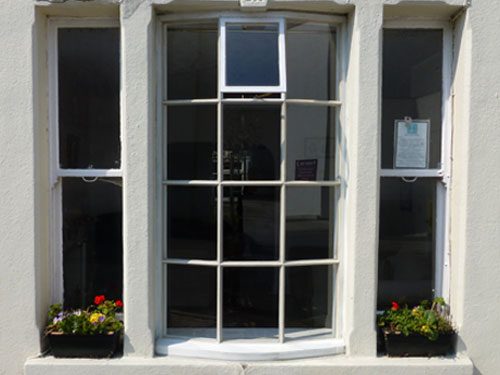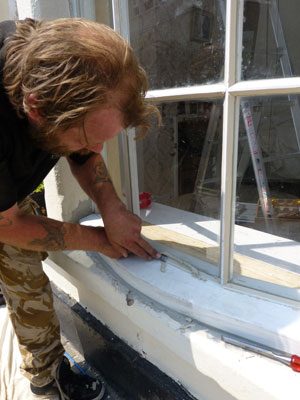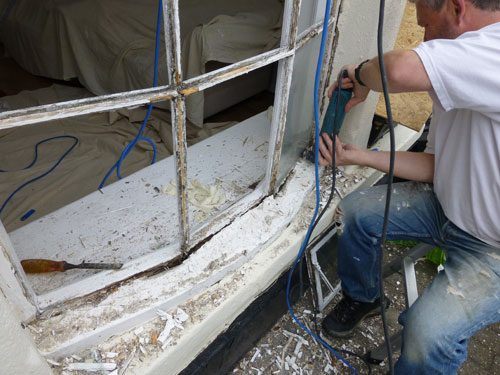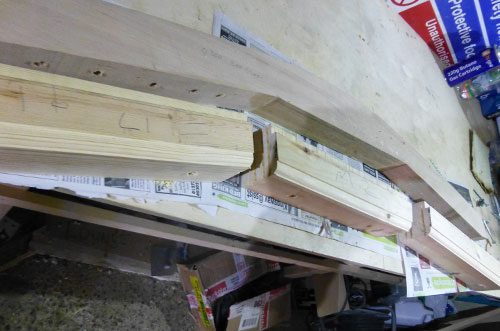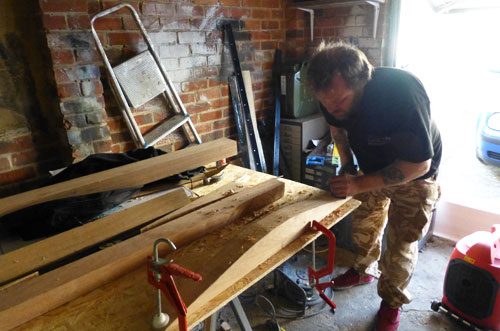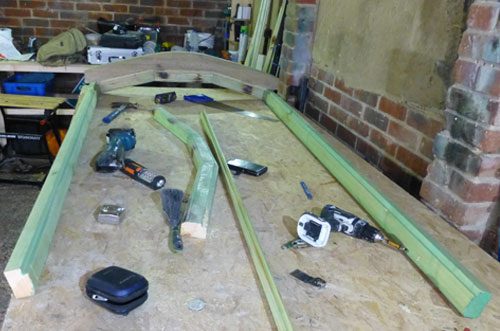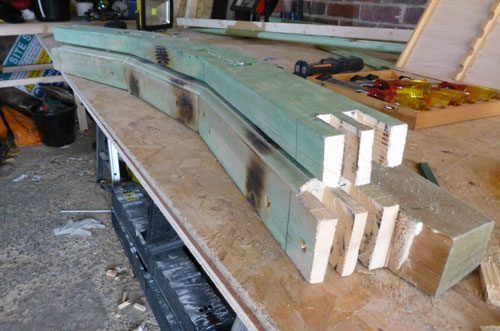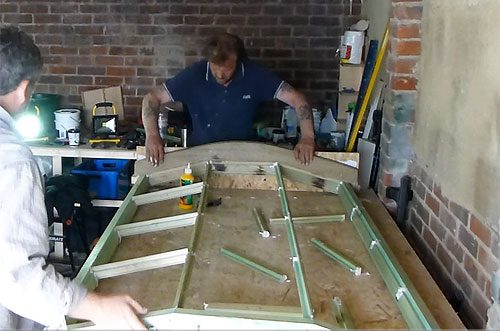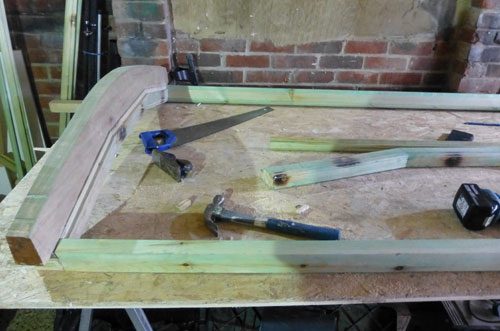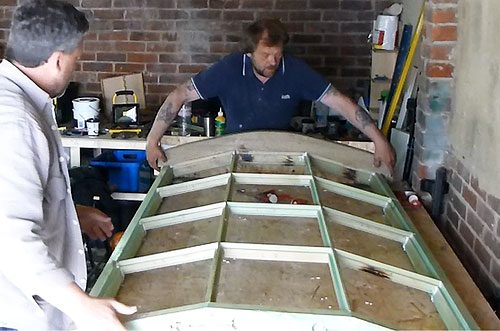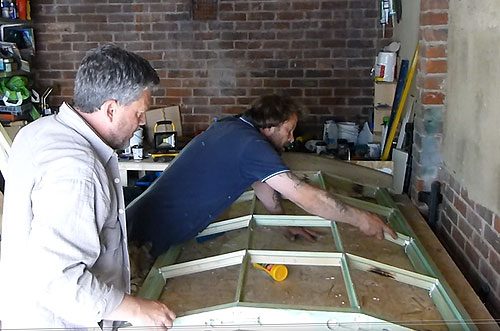Brunswick Road, Worthing New Bowed Casement Window Installation and Window Restoration
Sash windows went through a lot of changes from the way that they were constructed, from getting ripped out and new plastic or wooden windows or doors to replace them. A big thing about the sash window is that they are part of the building and the windows were built into the walls making them part of the structural integrity of the building.
The house on Brunswick road was built around 1805 when it was known as Little Heene, a small village outside the parish of Worthing. The place was a lawless part of Sussex that Worthing wanted nothing to do with. In the 19th century there was a wall erected by a commissioner of Worthing called Edward Ogle. This was to try and keep the debauchery at bay.
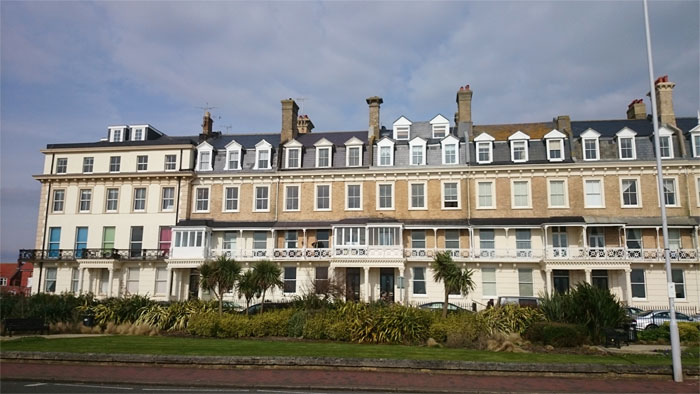
Worthing so badly wanted to be like Brighton in the Regency Period
Worthing could see what was happening in Brighton with the Brunswick and Kemptown development, so very popular with Londoners and they wanted a piece of the pie.
As Heene changed, so did the houses and in 1870, Heene became part of Worthing like Hove is to Brighton. This is why when you look at Heene Terrace Worthing you can see that they have gone for the London Regency look.
Nothing like what was the original Heene village – now called Brunswick road. This was one road and was mainly scrub land that joined to the sea. So the whole area got a face lift to tie in with the new look and try and get hold of that lucrative London market.
To start in Brunswick road, they to ripped out all the front windows and install Bowed casement windows known as Compass windows. This was very popular in that period as a status symbol and good to have an overall view of the whole area without it being interrupted.
Can you class a new bowed casement window installation as a restoration?
When we looked at the property this was the last standing original window in the street. It had been repaired constantly over the last 150 years since its face-lift, but unfortunately this was a window that was not cost effective to restore again as only a few original features were left from the mix-match of different carpenters that tried to repair this lovely window.
When we realised this we did the right thing and kept to our word of the price that was given and made them a brand new window.
The new window was copied to the original from every detail of mouldings and measurements especially with the fan light window. This was so thin it should have been on a Wendy house.
We love these jobs. You enjoy unravelling the history of the house from the windows. Discover old design and what is lurking behind the windows when restoring them back to their original beauty.
Yes we still class this as a restoration of the window as we are following conservation guidelines with listed buildings and copying every minute detail of the original window. This was a very difficult window to build. One difficulty is that it was on a Bowed window Sill with a 15 degree cut angle for the returns of the casement window. Thus creating 2 different templates to follow, bowed and half a hexagon shape to create the bay window.
Standing over 6 foot tall, getting this window square and all the glazing bars running parallel was frustrating at times, you can see by our video on this page of the construction .

Window construction explained
The window was completely hand made from the glazing bars to the window sills. The sills and the head jam were a pleasure to construct, as you are trying to mimic something that was done over a hundred and fifty years ago. To dissect something visually take pictures and templates and then start creating something that has materialised out of normal stock pieces of wood is fantastic.
Everything had to be right from the angles to the length of each section. If you think that if the angle on a obtuse angle was slightly out a few degrees then the overall length would be smaller or bigger and in the case of a window then this is bad news. Because if it is too small then you will have to add on something to the window and this would not be an exact copy of the original would it!
If it was too big then you would have to take some of the window itself leaving it weaker from when you started and this is not acceptable. It’s all about double checking and checking again to make sure that it is right.
The cill was made with a normal bowed shaped cill then the bay window cill was next this was joined using toggle bolts and biscuit jointed and polyurethane glue. Then we had to join the two different sills together which were glued and screwed together and left to cure.
Then the glazing bars were made using 28mm timber and run through an industrial router table. These were all measured up together and then marked for the glazing bars at the same time to make sure that every one was identical.
Timing the window and seeing how long it takes to construct is a must
Once all the bits had been made and cut to size we would dry fit the window together and check everything. As the window was so big it needed 2 people constantly altering measurements precisely to the 0.1 mm. I will tell you why here as I was describing the process to the people that worked on this window with me.
If you have a glazing bar 1 mm out on the first run at the first pane of glass this will be emphasised even more when you get to the middle of the window and it will push it out around 4 mm. This will have a massive knock on effect with the rest of the glazing bars pushing them all out. The only way to find this out is to strike string lines down each glazing bar. If it is out in one section it will carry on all the way through so you would have to alter the horizontal glazing bars to get each vertical one straight.
It may only be one but through experience you can usually work out which one it is. This is very important when you are dealing with Georgian panel windows because it is like the game ‘spot the difference’ you play as a child. You will know that something is wrong but you don’t know what until you finally see it and this will bug you tenfold especially if you have paid for this product.
Then the race begins this is because we have only a certain amount of time with certain glues usually 5- 30 mins. Here we would time the construction and check that when we did the fit it would be still square then we would start to glue it together and construct the window as you can see on our second video. It has been speeded up but it took around 20 mins to get it perfect. Doing this sort of project, everyone has their job to do and every job is important as the next in line on a process like this.
The last job on the construction side of this was to sand down all the glazing bars and prime the whole thing ready for installation. When we prime we always use a preservative on the timber before the construction. This gives it extra protection against rot and fungus infestation. This is a preservative primer from Dulux and then we would prime it again in Sandtex 10yr guarantee primer undercoat.
This is why Sussex Sash Window Restoration are meticulous when it comes to detail, everything has to look right and be right. I personally check everything before it leaves for the property that it is intended for. This is so important and we know we are only as good as our last job.
When it came to the installation this always gets your heart racing seeing if everything is okay from the weather to the window opening itself. It was a pleasure to install everything worked, every measurement was to the millimetre and it fit like a glove. The only problem was lack of room that we had to get really nice putty lines.
The customers were so happy that finally they had their new window installed and it looked exactly the same as the original whilst other windows on the street had changed the whole character of the windows by not taking on the original features.

